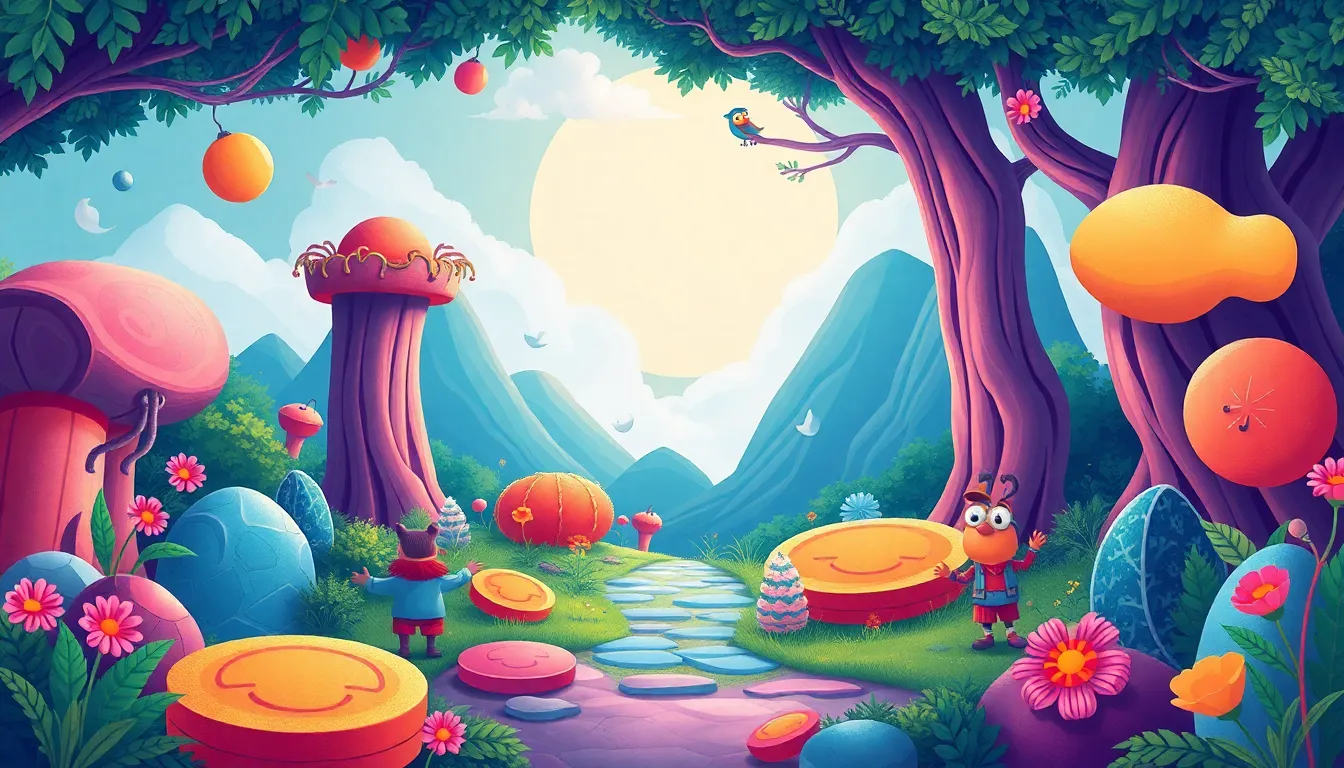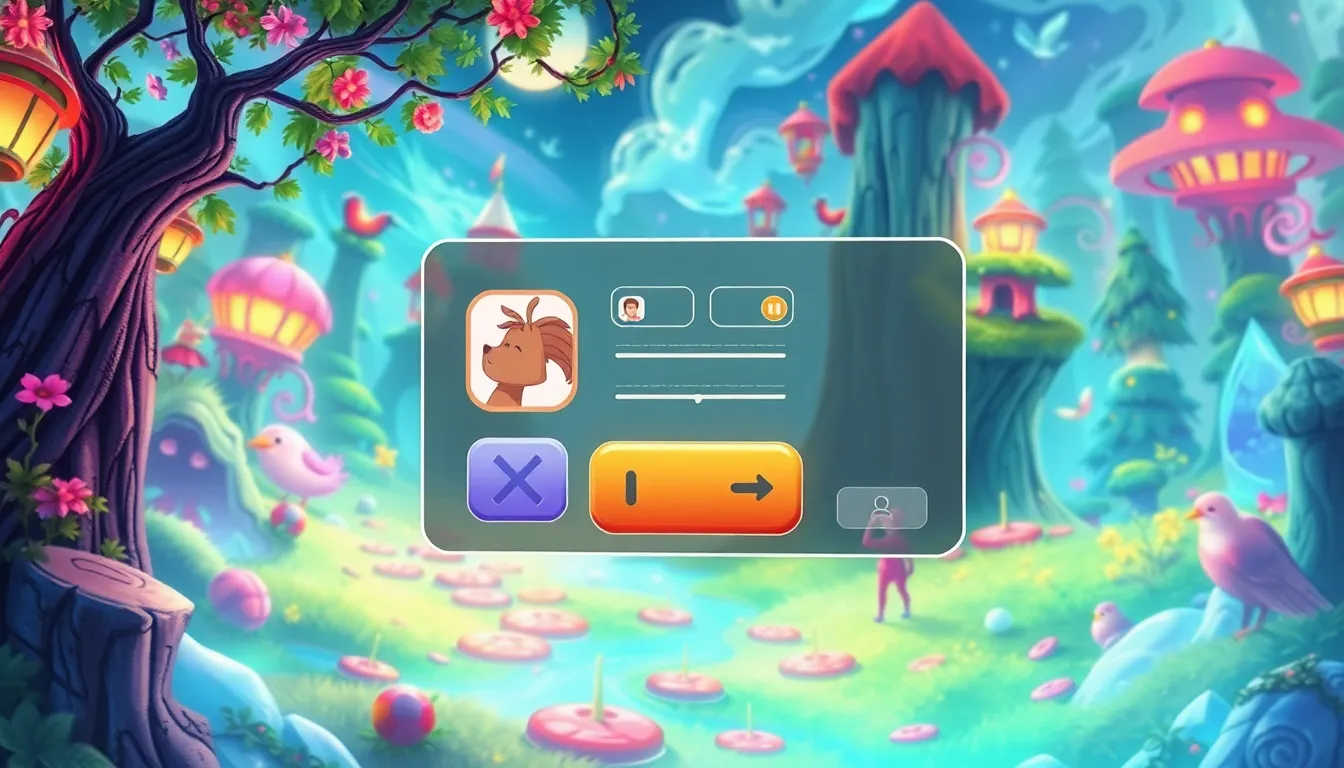Imagine stepping into a world where every click feels like a magic spell and every swipe reveals hidden treasures. Welcome to the realm of fantasy UI, where design meets imagination and user experience transforms into an adventure. It’s not just about aesthetics; it’s about crafting an interface that enchants users and keeps them coming back for more.
In a landscape overflowing with mundane designs, fantasy UI stands out like a unicorn at a horse race. It captivates users with whimsical elements and immersive storytelling, making mundane tasks feel like epic quests. From vibrant colors to enchanting animations, this approach doesn’t just make apps and websites pretty; it creates a memorable experience that users won’t forget. If you’re ready to sprinkle some magic into your digital projects, dive into the world of fantasy UI and discover how it can elevate your designs to legendary status.
Fantasy UI
Fantasy UI represents a unique design philosophy that merges creativity with usability. This approach elevates ordinary user interactions, transforming them into immersive experiences. Designers employ whimsical elements, vibrant colors, and captivating animations to draw users into a delightful digital world.
In essence, fantasy UI prioritizes user engagement, making every action feel like part of a narrative. It encourages exploration through interactive features that surprise and delight users. Designers might incorporate fantasy themes, such as magical landscapes or playful character animations, to capture interest and spark imagination.
Notably, fantasy UI influences various applications, from gaming to e-commerce platforms. While aesthetic appeal captures attention, the experience remains at the forefront, aiming to enhance usability and satisfaction. Interfaces utilizing this approach often feature oversized buttons, unique fonts, and fluid transitions to maintain a sense of whimsy.
For example, gaming apps frequently apply fantasy UI principles to create enchanting environments that immerse players. E-commerce websites can adopt similar techniques by using themed backgrounds and engaging micro-interactions that make shopping feel like an adventure.
Overall, the goal of fantasy UI is to craft memorable experiences that resonate with users long after their interactions. This captivating style challenges traditional design norms, encouraging creators to think outside the box and envision possibilities beyond standard frameworks.
Key Characteristics of Fantasy UI

Fantasy UI features several distinct characteristics that enhance user engagement. These traits combine creativity with functionality, resulting in captivating interfaces.
Unique Visual Elements
Visual elements stand out through their imaginative design. Oversized buttons capture attention while quirky fonts add charm. Color palettes often feature vibrant and unexpected combinations that create a sense of whimsy. Designers frequently integrate illustrations and animations representing fantastical themes. Characters may interact with users, providing feedback or guiding them through tasks. Rich textures and layered backgrounds provide depth, presenting users with inviting landscapes. Altogether, these unique visuals contribute to an enchanting atmosphere while maintaining usability.
Immersive User Experience
An immersive user experience defines the essence of fantasy UI. Users feel drawn into the narrative with engaging elements that evoke emotions. Navigation flows seamlessly, encouraging exploration and interaction. Micro-interactions enhance feedback, making every action rewarding. For instance, playful animations accompany actions like clicking or scrolling, reinforcing a sense of agency. Storytelling plays a key role; users experience events unfold as they navigate through the interface. Every element invites users on a journey, transforming mundane tasks into captivating adventures.
Popular Examples of Fantasy UI
Fantasy UI thrives in diverse platforms, captivating users with playful designs and immersive experiences. It manifests vividly in video games and websites, blending functionality with imaginative aesthetics.
Video Games
Video games epitomize fantasy UI with their immersive worlds and engaging gameplay. Designers craft interactive environments where oversized buttons and whimsical characters guide players. Titles like “The Legend of Zelda: Breath of the Wild” showcase vibrant landscapes filled with enchanting details. Characters often respond to user actions through fluid animations, enhancing the sense of adventure. Elements such as magical spells or unique items create an engaging experience, inviting players to explore every nook and cranny of these fantastical realms. The focus remains on creating a cohesive narrative that encourages exploration and interaction.
Websites and Applications
Websites and applications also embrace fantasy UI, turning routine tasks into adventures. For instance, e-commerce sites like Etsy utilize whimsical backgrounds and unique fonts to evoke creativity. Engaging micro-interactions enhance usability, making browsing enjoyable. Organizations like Behance feature visually rich layouts that allow users to delve into portfolios seamlessly. Features such as fluid animations and captivating illustrations lead to user satisfaction. Companies prioritize storytelling through their design, ensuring that every click resonates emotionally. Overall, fantasy UI transforms ordinary online experiences into engaging journeys, inviting users into captivating digital worlds.
Designing a Fantasy UI
Creative design plays a crucial role in developing fantasy UIs. Each element contributes to an enchanting user experience that captivates and engages users.
Color Schemes and Typography
Bold colors energize the interface, enhancing user engagement. Designers often select vibrant palettes that evoke emotions, such as joy and wonder. Unique typography adds personality, with whimsical fonts capturing the spirit of the theme. The combination of these elements creates a harmonious visual experience. Striking contrasts draw attention to key features, while softer shades can provide balance. Consistency across color schemes and fonts strengthens the overall aesthetic appeal of the UI. Incorporating gradients and playful color interactions elevates interactivity, making actions feel magical and immersive.
Imagery and Graphics
Imagery and graphics serve as the foundation for immersive storytelling. Illustrative art styles and rich textures enhance the fantasy elements, inviting users to explore further. Animated graphics add dynamism, with characters and objects that respond to user interactions. These visual elements foster a connection, as they become part of the narrative journey. Background images often reflect the theme, immersing users in enchanted landscapes. Icons and buttons can also adopt whimsical designs, reinforcing the overall atmosphere. Layered graphics create depth, encouraging users to get lost in the digital world. Thoughtful imagery selection enhances usability while remaining playful and engaging.
Challenges in Fantasy UI Development
Designing a fantasy UI presents unique challenges that require careful consideration. Creativity and usability must coexist to ensure a seamless user experience.
Balancing Creativity and Usability
Achieving harmony between whimsical design and practical functionality proves challenging. Integrating imaginative elements without overwhelming users is crucial. Excessive embellishments can distract from core actions, leading to frustration. Designers should focus on intuitive layouts that guide users effortlessly. Finding the right mix between creative visuals and user-friendly navigation enhances engagement. Users appreciate interfaces that invite exploration while remaining easy to use. Striking this balance often requires rigorous user testing and feedback to refine the design.
Performance Considerations
Performance remains a critical factor in fantasy UI development. Heavy graphics and animations can hinder loading times, diminishing user experience. Optimizing images and using efficient coding techniques enhances responsiveness without sacrificing aesthetics. Reducing the file sizes of illustrations ensures quicker load times. Additionally, developers should prioritize mobile-friendly designs, as many users access interfaces via mobile devices. Ensuring smooth interactions prevents users from abandoning an application out of frustration. Ultimately, maintaining performance alongside captivating designs fosters overall satisfaction and user retention.
Conclusion
Fantasy UI represents a revolutionary approach to design that captivates users and transforms interactions into immersive experiences. By blending creativity with usability, it invites users to engage with interfaces in ways that feel both enchanting and rewarding.
As designers embrace this philosophy, they create not just functional tools but also narratives that resonate with users on a deeper level. The balance between whimsical elements and intuitive navigation is key to ensuring that these experiences remain enjoyable and efficient.
Ultimately, fantasy UI challenges traditional design norms and encourages a fresh perspective on user engagement, making every digital journey a delightful adventure.

